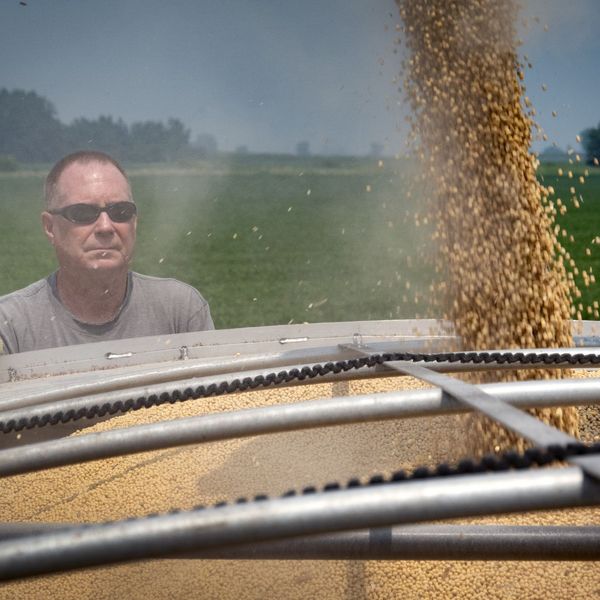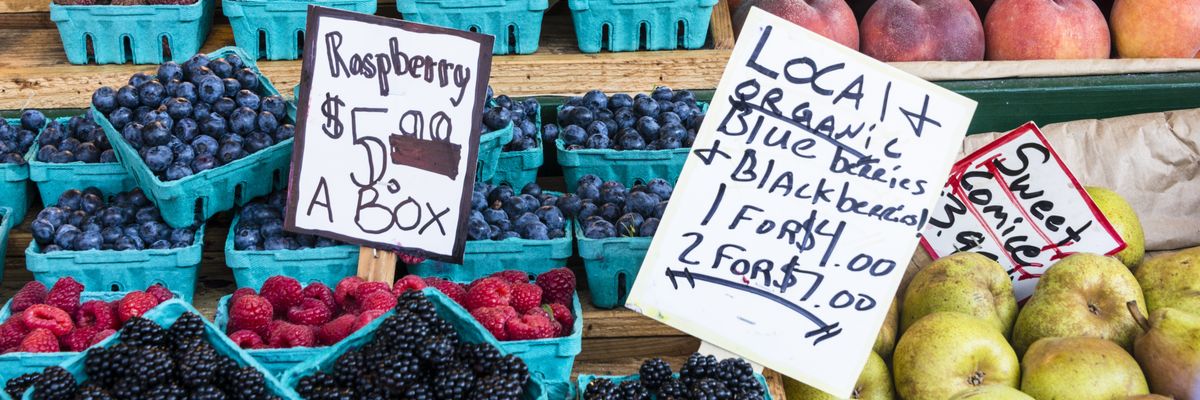Much has been made about how the U.S. House’s draft of the Farm Bill—that massive omnibus legislation that governs our food system—stands little chance of advancing. Whether the potential cuts to food assistance, or its lack of attention to climate change, the 900 page-plus bill moving through the House is being slammed by Democrats in the Senate and House alike.
Posturing from both sides aside, Democrats and Republicans should work across differences and pass a Farm Bill before electoral campaigns in the fall put legislative activities on hiatus.
Furthermore, the opportunity for bipartisan work exists as both parties acknowledge the importance of small-scale producers. Supporting such farmers would keep working people on the land while also showing what political maturity could look like as partisan squabbling too often stymies serious work from getting done in D.C.
Let’s be clear—there is more than enough in both the Senate and House proposals for our legislators to find common cause.
Before parsing details, it’s worth noting how Farm Bill negotiations are on borrowed time. Originally set to expire last September, U.S. President Joe Biden signed a one year extension as negotiations stalled amid the government shutdown debate.
Kicking the legislative can down the road, so to speak, may also have been part of each party’s respective legislative strategies. Basically, the idea is that if one party could win the presidency, and also earn majorities in both houses of Congress this fall, then legislative work would be easy in 2025 and beyond.
But the reality of our divided body politic will most likely dash such naive hopes of legislative smooth sailing.
Specifically, polls show the race for the White House in a dead heat, as
control in the Senate and the House could go to either party. Moreover, there is no path for either party to garner 60 seats to create a filibuster-proof supermajority that is needed to pass legislation without opposition in the Senate.
Given that divided government is more than likely, our legislators should pass legislation to govern our food system instead of continuing to procrastinate.
Furthermore, such work is needed, as the 2022 Agricultural Census showed farm exits picking up pace. From
2012 to 2022, over 200,000 farms—nearly 10% of operations from just 10 years ago—went out of business. Meanwhile, farmers are aging out of the profession, with the average age ticking up from 57.5 to 58.1 since 2017, as operations consolidate and increase in size.
Enduring the brunt of these changes are small-scale operations, which in general are
the most vulnerable financially speaking and at risk of leaving the industry. Keeping them in operation is key for supporting local economies, as well as protecting natural resources.
In terms of the legislation that would keep small-scale farmers on the land, while we do not have full text of the Senate version, there is
a list of proposals that most likely will appear in some bill text. One provision dedicates 10% of Environmental Quality Incentives Program (EQIP) funds—a program that specializes in sustainable agriculture—for small-scale producers. The Senate also establishes a program for the Secretary of Agriculture to make grants to small meat processing establishments for local markets and producers.
The Senate proposal also creates the Office of Small Farms.
For this proposal, a newly appointed director would advise the Secretary of Agriculture and coordinate U.S. Department of Agriculture activities concerning programs, policies, and issues relating to small-scale farmers and ranchers. Each state would also have a coordinator from this office, along with $5 million for microgrants.
On the House side, similar language in support of small-scale operators is found in supporting local processing establishments with the inclusion of the H.R.2814—the Processing Revival and Intrastate Meat Exemption Act or the PRIME Act. There is also H.R.4873—the Food Supply Chain Capacity and Resiliency Act—which would support new investments in food processing, storage, and distribution.
While the House does not earmark EQIP resources for small-scale producers, leaders in the lower chamber
in their summary note how they intend to keep the program farmer-led and local.
Let’s be clear—there is more than enough in both the Senate and House proposals for our legislators to find common cause. As with all serious legislation, compromises will be made. Republicans will most likely budge on food assistance, as Democrats may pare down some of their asks for new offices and resources. But such deals are made in a world where differences exist. Our Farm Bill could serve to illustrate that point, not only for those interested in the future of agriculture, but for how to move past gridlock and get things done.



